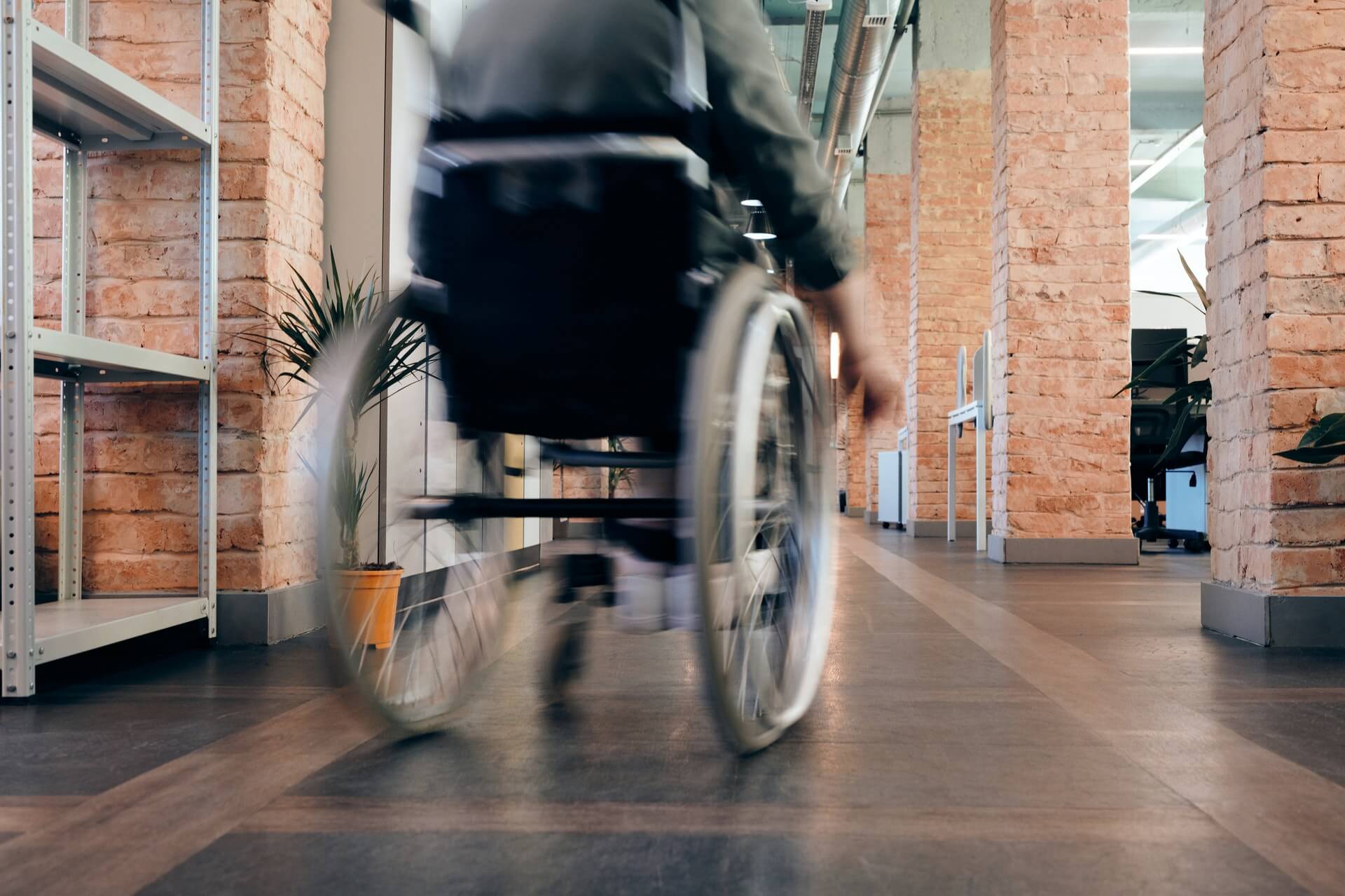PIP mobility maximum payment
There are two rates to the PIP mobility component. The lower weekly rate is £23.70, and the higher weekly rate is £62.55.

You may be eligible for the Personal Independence Payment (PIP) mobility component. This may be the case if you have difficulty moving around or walking. Indeed, this could be due to a mental or physical disability. This Your Benefits article will walk you through everything you need to know about the PIP mobility component.
As said before, there are two rates of PIP (Personal Independence Payment). Indeed, there is the PIP daily living and PIP mobility rate. Overall, the PIP mobility part pays less than the daily living part. Regardless, you will not have to pay any tax on your PIP payments.
You may earn the following amounts for each rate and component:
| Personal Independence Payment (PIP) amounts per component and rate in 2022 | ||
|---|---|---|
| Lower weekly rate (minimum payment) | Higher weekly rate (maximum payment) | |
| Daily living part | £60.00 | £89.60 |
| Mobility part | £23.70 | £62.55 |
Note that your eligibility for the Personal Independence Payment (PIP) is regardless of your employment status. Additionally, you may receive other benefits or have savings. If you are younger, you can claim the Disability Living Allowance (DLA) instead. Furthermore, if you work, you will have to pay National Insurance.
The Personal Independence Payment (PIP) is a payment for people who have both of the following:
The mobility component of the Personal Independence Payment (PIP) is for those who have difficulties moving around. Indeed, your eligibility is measured on a point system. The higher you score, the more likely you are to qualify for a given component.
To be eligible for the mobility component, you must first be eligible for Personal Independence Payment (PIP). Indeed, all of the following need to be true, you:

You may be eligible for the mobility component of PIP. In fact, this is the case if you need assistance with the following:
Note that your country of residence impacts your eligibility for the Personal Independence Payment (PIP). Indeed, one of the following will likely need to be true for you:
You may have lived in Switzerland, the EU, Norway, Iceland or Liechtenstein. If this is the case, you may qualify for Personal Independence Payment (PIP). However, you will not be eligible for the mobility component.
When your PIP claim is assessed, a health professional looks at your case. Indeed, they look at your ability to carry out mobility and daily living activities, like dressing and undressing. Then they look at if you need help to carry them out. Then, you may earn a rate of the mobility component.
They will write a report to the Department for Work and Pensions (DWP). Then, a person at the DWP will decide what rate you can earn, as well as for how long. They will look at, in part, if you can use an appliance or aid to help you with your mobility difficulties.
If this is true for you, you may earn more points, even if you do not use them. Also note that you will often need to come face to face with a healthcare professional to determine this.
Both your ability to carry out daily living tasks and mobility are calculated using the point system. Indeed, you can get a maximum of 12 points.
You will get the mobility component if you score between 8 and 11 points. Moreover, this will be at the standard rate. If you receive more than 12 points, you will then receive the enhanced rate.

In the PIP mobility component, you may earn a total of 12 points. Let’s start with the first category. You will score 0 on “planning and following journeys” if you “can plan and follow the route of a journey unaided“.
On the opposite side, you can earn 12 points if you “cannot follow the route of a familiar journey without another person, an assistance dog or an orientation aid“.
These are the two extremes for the maximum and minimum number of points. There are criteria in the middle. For example, if you are unable to plan a route from A to B, you can earn 8 points. If going on said route causes an overwhelming amount of stress, you can earn 4 points.
Then there is the “moving around” category. Indeed, you may earn 0 points if you can “can stand and then move more than 200 metres, either aided or unaided“. On the opposite side, you can earn 12 points if you cannot stand, or move more than 1 meter.
This is whether or not you are helped while moving or standing. There are additional amounts of points you may earn. For example, you may be able to move between 20 and 50 meters unaided. In this case, you could earn 8 points. You may also stand and move between 50 and 200 meters (regardless if you are helped or not). In this case, you could earn 4 points.
Note that your limited mobility can also make you eligible for the motability scheme.
There are two rates to the PIP mobility component. The lower weekly rate is £23.70, and the higher weekly rate is £62.55.
The minimum amount you can get with the PIP mobility component is £23.70 weekly.
The high rate of the PIP mobility component is £62.55 weekly.
You will need between 8 and 12 points to get the pip mobility component.
Special educational needs and disability (SEND) in 2022
Disability rights in 2022 for employment, education and police
Adult Disability Payment: how much it is and how to get it in 2022
Blind Person’s Allowance 2022: how to get this benefit
UK Incapacity Benefit in 2022: a complete guide
Pip for depression and anxiety in 2022
PIP Daily Living component: rates and points in 2022
Registered Blind in 2022: the benefits you’re entitled to
Disabled Persons Railcard 2022: what you need to know
Severe Disability Premium: how much it is in 2022
Our algorithm calculates which grants you are eligible to apply for.
Simulate your benefits
I am already receiving PIP I am on low rate am I entitled to mobility as my condition has deteriorated
what is my next step
Thank you
Hello,
You can call the PIP enquiry line (0800 121 4433) and report a change of circumstances.
Hope this helps,
Robin
I would appreciate some advice on PIP. Last September I had surgery for fractured spine and hip replacement and have only left the house for hospital appointments my GP surgery have me down as housebound.Constant daily pain and inability to move around even trying to get out of bed on my own has problems .I receive my state pension and attendance allowance and I’m 88yrs old . Always been a very active person , so the last 14 months have been very distressing.Should I apply?
Hello,
Yes, you should absolutely apply to get this benefit. You likely qualify for even a high rate.
Hope this helps,
Robin
Hi I’m wondering if you could help me fill in the forms for pip1 and pip 2. I have a diagnosis of PTSD and Dyslexia and I couldn’t find the information to get help to fill them in.
please contact if possible thanks
Courtney Price
Hello,
I would recommend calling the NHS for help filling out the form. You can phone them on 0300 330 1343.
Hope this help,
Robin
My wife is 72 years old and gets the top rate of PIP personal care and thestandard rate of PIP mobility allowance.
Her health is much worse now than when she was first awarded te benefits.
Could she get the enhanced rate of PIP mobility allowance which would enable us to get a mobility car?
Hello,
Yes, she can do this through reporting a change of circumstance on the Gov.UK website.
Hope this helps,
Robin
How and where can I apply for the PIP disabled benefit
Hello,
You can apply on the Gov.UK website.
Hope this helps,
RObin
I am trying to find out if my mum is eligible for pip mobility component
She is 87 year old walks with a Zimmer in the house has a stannah lift and a wheelchair for outdoors she cannot go out without myself and sister
Hello,
It sounds like she would be eligible. However, she would be eligible for the Attendance Allowance instead of PIP.
Hope this helps,
Robin
I am 87 & have a severe dislocation of two lower back vertebra as shown on mri scans, ( cd images available ) trapping nerves to my back & legs, producing severe pain, muscle weakness & balance problems. Both my knees are arthritic & very painful, & I need prescribed painkillers. I cannot negotiate stairs etc, & have had a stairlift installed. I cannot board a bus or train. If I fall I cannot get up without crawling to a chair & very painfully pulling myself up using my arms & elbows. I can walk a few yards in pain using two sticks or crutches. I have pain & balance problems getting in & out of a car or taxi.
Hello,
I believe you would be eligible for the higher rate of both components of the Attendance Allowance.
Hope this help,
Robin
I already claim PIP ,I am enquiry in a mobility car
Hello,
You likely can apply for that as well.
Hope this helps,
Robin
I am hence grateful for your post.
Hello,
Thank you very much for your comment. I am glad that this was helpful to you.
Have a good day,
Robin
I claim the higher pip , will I qualify for the mobilty part I suffer from depression moviing around is very difficult and i cant leave the house un aided . My husband is my carer who has to assist me with every day day tasks bathing dressing
Kind Regards
J Hughes
Hello Mrs Hughes,
Yes, it does sound like you qualify. You may even be eligible for the enhanced rate.
Hope this helps,
Robin